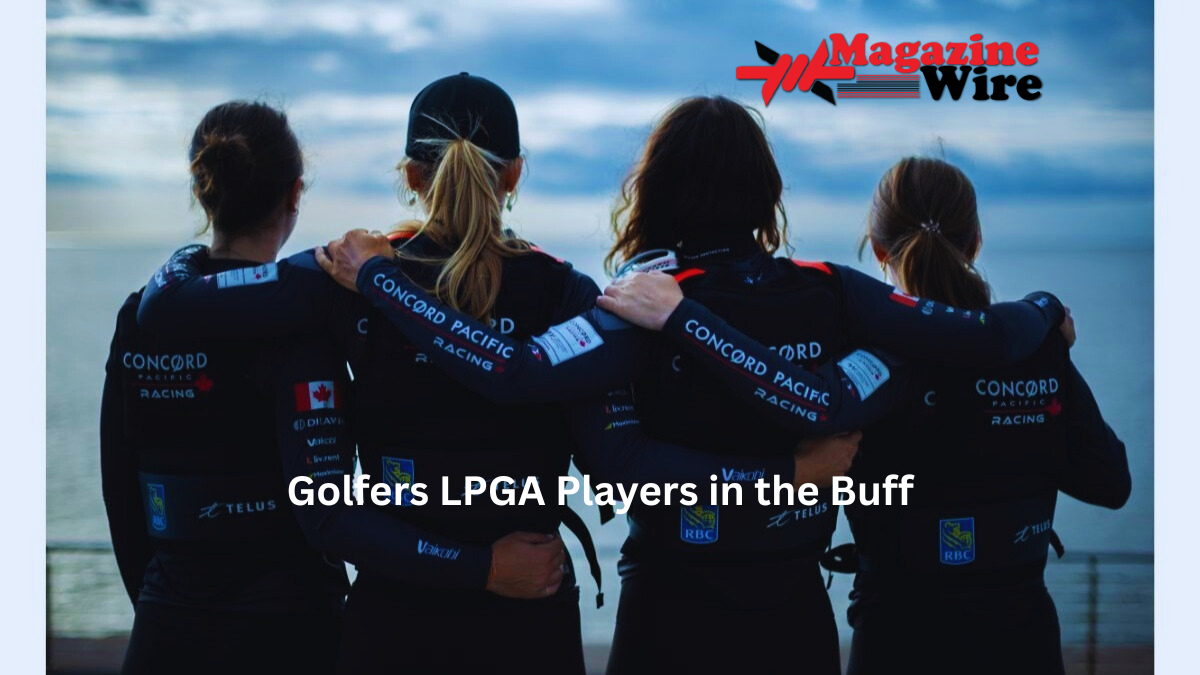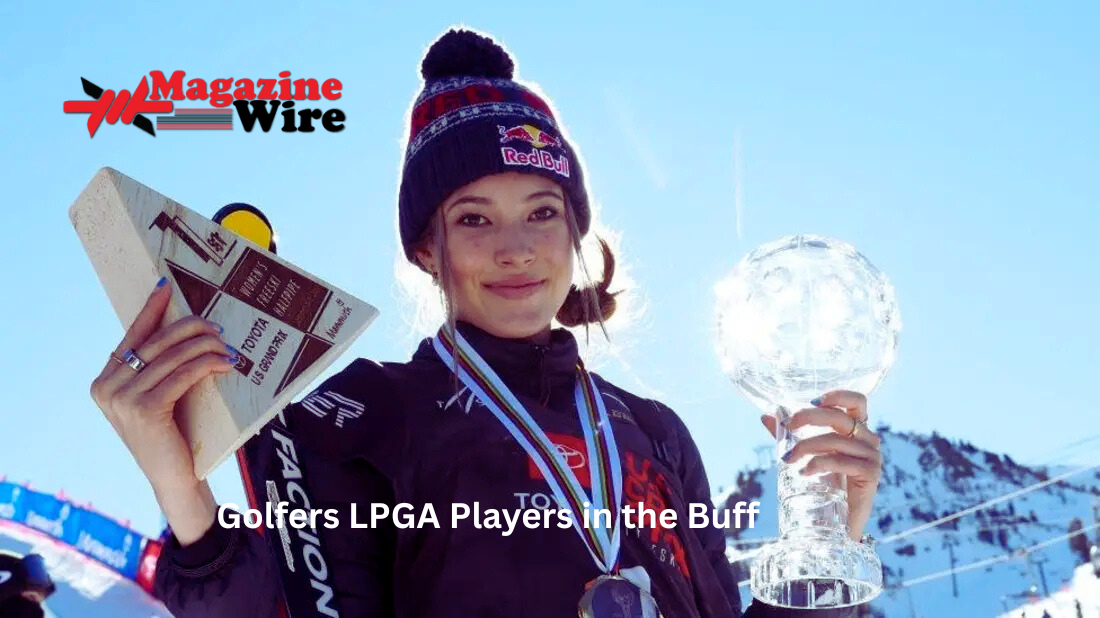The intersection of sports and media often produces controversial and sensational headlines that can overshadow the true accomplishments of athletes. One such issue arises when certain segments of the media focus on the physical appearance of athletes rather than their skills or achievements. A recent trend that has garnered attention, particularly in the realm of golf, involves the phrase “golfers LPGA players in the buff.” This article will explore the implications of this phrase, examining the challenges faced by female athletes in the LPGA (Ladies Professional Golf Association) and the broader media landscape, and how it reflects societal attitudes toward women in sports.
The Meaning Behind “Golfers LPGA Players in the Buff”
When one hears the phrase “golfers LPGA players in the buff,” the imagery conjured is that of female golfers in their natural state, without clothing, which in itself is a form of sensationalism. The idea of athletes being portrayed this way speaks to a larger issue within the sports media industry: the sexualization of women in sports.
In sports, especially women’s sports, there has long been a tendency to focus not only on the athletes’ skills but also on their physical appearance. The phrase “Golfers LPGA Players in the Buff” is often used in popular media to refer to nudity or revealing content. While this might appeal to certain segments of society, it often detracts from the achievements and struggles of the athletes themselves. The focus should be on the talent, dedication, and hard work of LPGA players, but unfortunately, media outlets and certain narratives often prioritize physical aesthetics over athletic performance.
The Challenges Female Athletes Face in the Media
The challenges faced by female athletes in the media are far-reaching. While male athletes are often celebrated for their athleticism, female athletes are frequently reduced to their looks. This reductionist view is not only frustrating but also deeply limiting for women in sports. The representation of LPGA players—such as the portrayal of them “Golfers LPGA Players in the Buff” or focusing on their appearance—perpetuates gender stereotypes and diminishes their worth beyond their athletic capabilities.
These issues are especially prominent in professional golf, a sport that, historically, has been dominated by men. The LPGA has been a platform for women to showcase their golfing talent, but the overwhelming media focus on beauty, fashion, and sexuality frequently overshadows the incredible skills and dedication these women exhibit.
The Impact of Media Sexualization on LPGA Players
Sexualization in the media often results in a distorted public perception of female athletes. For LPGA players, it means their golf skills can be overlooked in favor of their physical appearance. This can have a negative impact on their career trajectories, sponsorships, and public reception. For example, female golfers might be criticized or scrutinized based on their body image, clothing choices, or perceived attractiveness, rather than their performances on the course.
The media’s portrayal of female athletes also impacts their self-esteem. The constant pressure to conform to a specific standard of beauty can undermine their confidence and distract them from their primary focus: their sport. Additionally, female golfers may feel compelled to engage in marketing tactics that emphasize their looks, which ultimately takes the spotlight away from their achievements.
The Double Standard: Male Athletes vs. Female Athletes
There is a noticeable double standard when it comes to how male and female athletes are treated in the media. Male athletes, including top golfers like Tiger Woods or Rory McIlroy, are often celebrated for their performances on the course without being reduced to their looks. On the other hand, female athletes, especially LPGA players, often find themselves balancing their athletic pursuits with the pressures of maintaining an image that conforms to societal standards of beauty.
The sexualization of female athletes can be seen as a form of objectification that doesn’t occur with the same intensity or frequency for male athletes. Male athletes may have their physical attributes praised, but they are rarely reduced to their looks in the same way. For example, you don’t see headlines focusing on a male golfer’s body or clothing choices in the same manner that female athletes often experience.

Changing the Narrative: Empowering Women in Sports
Despite the challenges, there are efforts to change the narrative around female athletes, including LPGA players. Many organizations and advocates are calling for a shift in focus, urging the media to highlight the skill, determination, and accomplishments of women in sports rather than their appearance. By focusing on their performances and contributions to the sport, we can begin to redefine how female athletes are perceived.
Female golfers like Annika Sörenstam, Michelle Wie, and Nelly Korda have paved the way for future generations of LPGA players. These athletes have proven time and again that their talent on the course speaks louder than any superficial element. Their successes should be the focal point, not how they look in front of the camera.
Moreover, social media has become an empowering platform for many female athletes to control their own narratives. By sharing their training routines, behind-the-scenes glimpses into their personal lives, and insights into the challenges they face, LPGA players have a chance to reclaim their public image and promote the idea that athletes, especially female athletes, deserve to be celebrated for their skills and achievements, not just their physical appearance.
The Role of Sponsorships in Changing Perceptions
Sponsorships play a critical role in shaping the careers of professional athletes, especially in golf. For many years, the sponsorship landscape in women’s golf has been heavily influenced by beauty, fashion, and appearance-based advertisements. However, as the world of sports marketing continues to evolve, there has been a noticeable shift toward endorsing female athletes for their talent, rather than their looks.
Companies and brands that recognize the value of supporting athletes for their skill sets rather than just their appearance can contribute to changing the broader narrative. A number of sponsors have started to prioritize the athletic prowess of LPGA players in their advertisements, helping to normalize the idea that women in sports are more than just their physical image.
Conclusion: Moving Beyond the Buff
The phrase “golfers LPGA players in the buff” may evoke curiosity or shock value, but it is a stark reminder of the media’s tendency to reduce female athletes to their looks. While LPGA players deserve recognition for their talent, dedication, and hard work, the media and public attention often prioritize superficial aspects of their lives, undermining their athletic achievements.
It is time for the sports media landscape to shift toward more respectful and empowering representations of female athletes. By focusing on their performances, achievements, and contributions to their respective sports, we can help reshape the public’s perception of female athletes. Female golfers, like all athletes, should be celebrated for their skills, not their physical appearance. The narrative surrounding LPGA players, and female athletes in general, needs to move beyond the “buff” and toward an appreciation of their undeniable talent and commitment to excellence in their sport.
In conclusion, as society continues to evolve, we must advocate for media coverage that emphasizes the accomplishments of female athletes while rejecting objectification and sexualization. This change benefits not only the athletes themselves but also the broader sports community, as it fosters an environment of equality and respect in the world of athletics.



